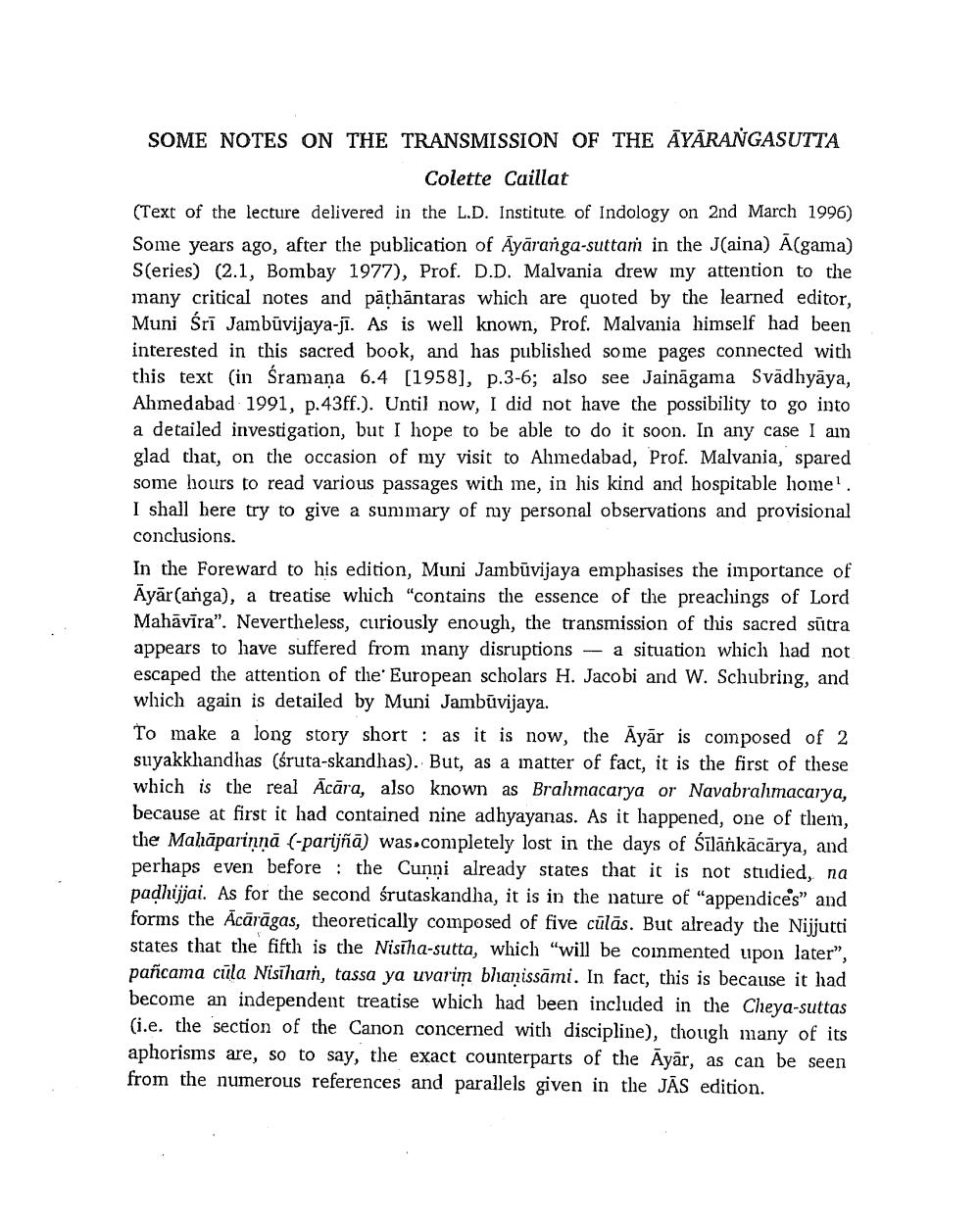________________
SOME NOTES ON THE TRANSMISSION OF THE AVĀRANGASUTTA
Colette Caillat (Text of the lecture delivered in the L.D. Institute of Indology on 2nd March 1996) Some years ago, after the publication of Āyāranga-suttam in the J(aina) A(gama) Series) (2.1, Bombay 1977), Prof. D.D. Malvania drew iny attention to the inany critical notes and pathāntaras which are quoted by the learned editor, Muni Śrī Jambūvijaya-jī. As is well known, Prof. Malvania himself had been interested in this sacred book, and has published some pages connected with this text (in śramana 6.4 [1958], p.3-6; also see Jaināgama Svādhyāya, Ahmedabad 1991, p.43ff.). Until now, I did not have the possibility to go into a detailed investigation, but I hope to be able to do it soon. In any case I am glad that, on the occasion of my visit to Ahmedabad, Prof. Malvania, spared some hours to read various passages with me, in his kind and hospitable home! I shall here try to give a summary of my personal observations and provisional conclusions. In the Foreward to his edition, Muni Jambūvijaya emphasises the importance of Āyār(anga), a treatise which "contains the essence of the preachings of Lord Mahāvīra". Nevertheless, curiously enough, the transmission of this sacred sūtra appears to have suffered from many disruptions - a situation which had not escaped the attention of the European scholars H. Jacobi and W. Schubring, and which again is detailed by Muni Jambūvijaya. To make a long story short : as it is now, the Ayār is composed of 2 suyakkhandhas (śruta-skandhas). But, as a matter of fact, it is the first of these which is the real Acāra, also known as Brahmacarya or Navabrahmacarya, because at first it had contained nine adhyayanas. As it happened, one of them, the Mahāparinnā (-parijñā) was.completely lost in the days of Sīlānkācārya, and perhaps even before : the Cunni already states that it is not studied, na padhijjai. As for the second śrutaskandha, it is in the nature of "appendice's" and forms the Acārāgas, theoretically composed of five cūlās. But already the Nijjutti states that the fifth is the Nistha-sutta, which "will be commented upon later”, pañcama cūla Nisthamn, tassa ya uvarim bhanissāmi. In fact, this is because it had become an independent treatise which had been included in the Cheya-suttas (i.e. the section of the Canon concerned with discipline), though many of its aphorisms are, so to say, the exact counterparts of the Āyār, as can be seen from the numerous references and parallels given in the JĀS edition.




